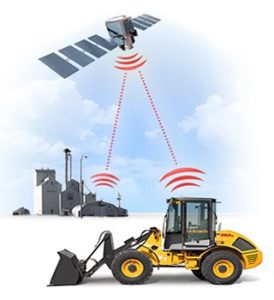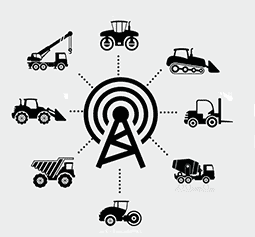The Construction Industry Is Now Utilizing Telematics Data │ What It Means for Your Business
Your construction equipment fleet’s telematics data is going to be a lot more useful soon, thanks to some major coordination efforts aimed at standardizing the type of data communicated remotely from fleet vehicles to end-users.
An international group made up of construction manufacturers, fleet managers and two of the heavy equipment industry’s top trade associations worked to define a set of 19 data points which establish standards to be used by the associations’ members. The standards also allow OEMs to transmit fault code information along with telematics data.
 This universal data set is intended to provide comprehensive information, addressing seven key categories:
This universal data set is intended to provide comprehensive information, addressing seven key categories:
- Utilization
- Excessive idle
- Location
- Job availability
- Inspection
- Electronic usage proof
- Preventive maintenance
Serial numberWithin those categories, the 19 data points are:
| • Serial Number • Asset ID • Hours • Location • GPS Distance Traveled • Machine Odometer • Fuel Consumption |
• Fault Codes • Idle Time • Fuel Level • Engine Running Status • Switch Input Events • PTO Hours • Average Load Factor |
• Maximum Speed • Ambient Air Temperature • Load Counts • Payload Totals • Active Regen Hours |
|---|
Standardization will bring greater efficiency.
An API, or Application Program Interface, will provide system users with standardized server-to-server protocols, ensuring seamless communication with business enterprise systems and with whatever variety of equipment your fleet includes. Instead of wasting time gathering telematics data from multiple websites for each of their OEMs, fleet managers will be able to import all the necessary information to a single system.
 That will make analyzing data much easier and faster. Instead of manually collating information from various sources into an Excel spreadsheet or some other format to study fleet-wide issues such as fuel usage, it will all be right at your fingertips. The upshot is that it will finally be possible to easily see the big picture, rather than focusing on individual machines.
That will make analyzing data much easier and faster. Instead of manually collating information from various sources into an Excel spreadsheet or some other format to study fleet-wide issues such as fuel usage, it will all be right at your fingertips. The upshot is that it will finally be possible to easily see the big picture, rather than focusing on individual machines.
You’ll not only be able to save administrative time, you’ll be able to save money by identifying opportunities to improve operations or maintenance and reduce fuel consumption. Even theft prevention will be more assured. Industry experts say that effectively using the information available via machine telematics can affect as much as 70% of your fleet operations costs.
And there’s more. You may also be able to reduce insurance premiums, based on the availability of telematic data. And you might see higher resale values, thanks to the ability to separate machine use from idle time.
These data points are just the beginning.
The developer group, which includes representatives of the Association of Equipment Manufacturers (AEM) and Association of Equipment Management Professionals (AEMP) – the two organizations responsible for implementation – will continue its work, focusing on integration of the new standards as well as introducing future upgrades as they are needed. A separate task force will design data transfer/conversion security plans.
Yet another group will take on issues surrounding governance. They will be responsible for reviewing and overseeing telematics management, to assure compliance with technical specs, as well as version updates and creating a certification program for end users, OEMs and system management firms.
A beta version of the standard is currently being evaluated, and the developing group hopes to release the standard to AEM and AEMP members for implementation by the end of the year, hopefully sometime in October. Spokespeople for the two associations say they hope the fact that they have been, and will continue to be, actively involved in the creation of the standards will encourage widespread acceptance among their memberships.
